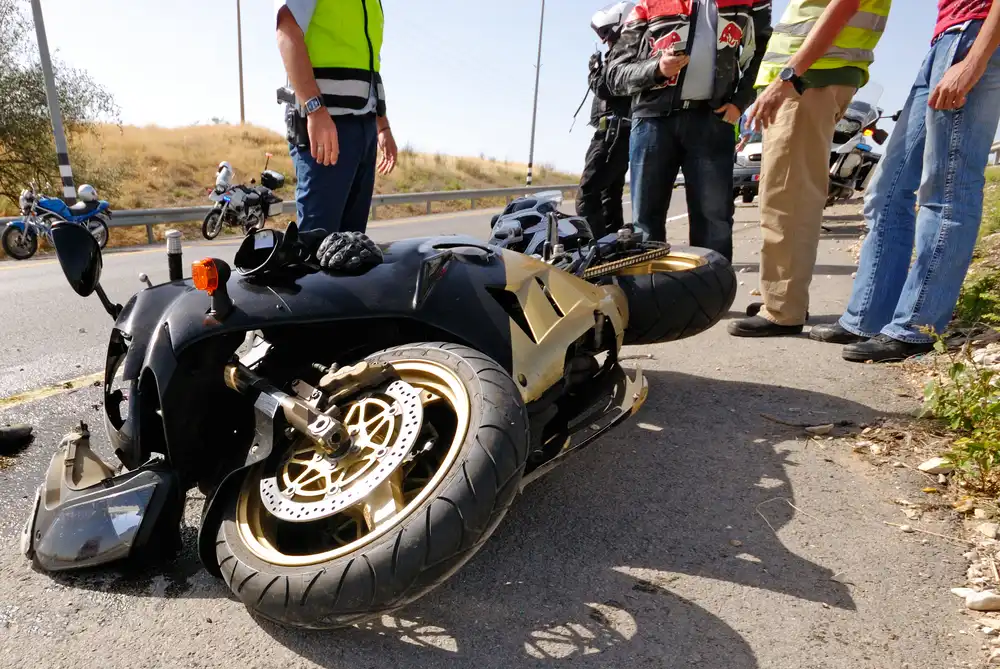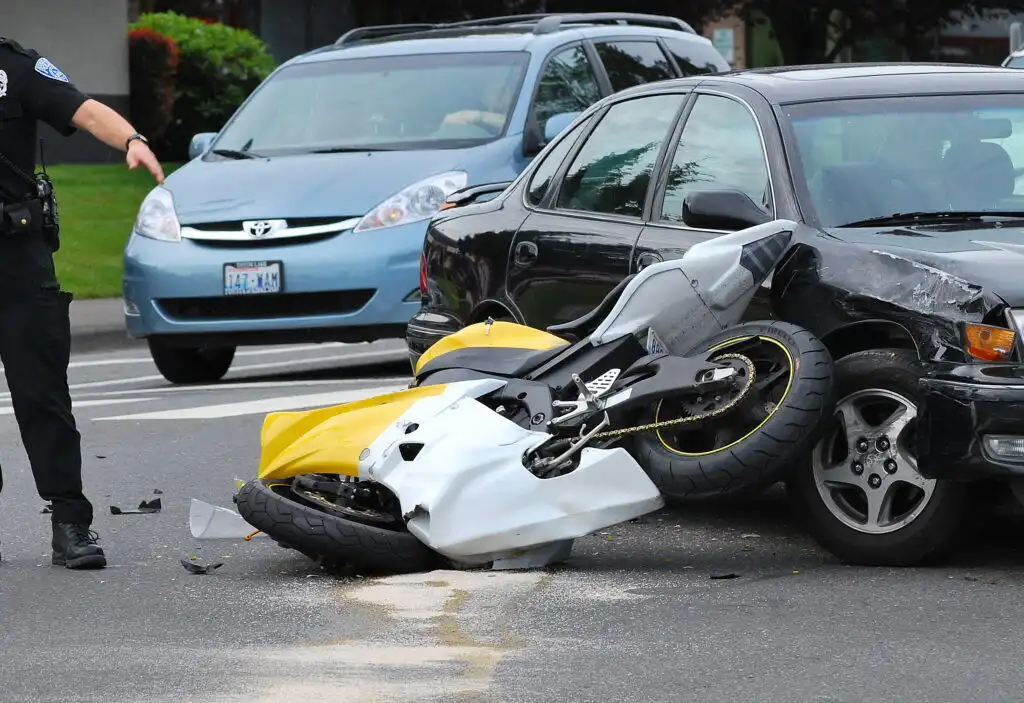Motorcycle accidents are a significant concern for both riders and motorists. Unlike car accidents, motorcycles offer less protection to the rider, which often leads to more severe injuries and fatalities. While awareness of the causes behind motorcycle accidents can lead to better safety measures, many still lack a clear understanding of what triggers these incidents. A data-driven approach to motorcycle accidents helps identify patterns, contributing factors, and solutions.
In this blog, we’ll dive into the key causes of motorcycle accidents, supported by statistical data, to provide a better understanding of how these accidents occur and what can be done to reduce their frequency and severity.
1. Speeding: The Leading Cause of Motorcycle Accidents
One of the most common and dangerous causes of motorcycle accidents is speeding. Motorcyclists who travel above the posted speed limit or drive too fast for road conditions are at a much higher risk of losing control of their bike or not having enough time to react to hazards.
Data Insights:
-
According to the National Highway Traffic Safety Administration (NHTSA), speeding contributes to about 33% of all motorcycle crashes. This makes speeding a top factor in fatal motorcycle accidents.
-
Speeding reduces the rider’s ability to react to changes in road conditions, obstacles, or sudden movements of other vehicles, making it difficult to avoid collisions.
Why Speeding Is a Factor:
-
Reduced Stopping Distance: The faster a motorcycle travels, the less time and distance the rider has to stop or maneuver around potential obstacles.
-
Increased Severity of Crashes: Higher speeds increase the likelihood of severe crashes. When a rider falls at high speed, the impact is much greater, often leading to more severe injuries or death.
2. Motorcycle Rider Error
While motorcycles require a certain level of skill to operate safely, rider error is also a leading cause of accidents. Inexperience, poor decision-making, and a lack of understanding of road safety can result in mistakes that lead to crashes.
Data Insights:
-
NHTSA reports that nearly 30% of all motorcycle accidents involve rider error. Common mistakes include improper turning, failing to yield the right of way, and not adjusting speed according to road conditions.
-
A study by the Insurance Institute for Highway Safety (IIHS) found that riders under the age of 30 are more likely to be involved in accidents due to inexperience or lack of judgment.
Why Rider Error is a Factor:
-
Lack of Training: Riders who do not take motorcycle safety courses are at a higher risk of making dangerous mistakes. Training programs teach riders how to handle different types of traffic situations and conditions.
-
Overconfidence: Some riders, especially those with limited experience, may overestimate their ability to navigate challenging roads or handle difficult weather conditions.
3. Impaired Riding: Alcohol and Drug Use
Impaired riding is a dangerous combination that significantly increases the likelihood of an accident. Alcohol, drugs, or even some prescription medications can impair judgment, reaction time, and coordination, all of which are crucial for safe motorcycle operation.
Data Insights:
-
According to the NHTSA, alcohol impairment is involved in about 25% of all fatal motorcycle accidents. Additionally, a rider with a blood alcohol content (BAC) of 0.08% or higher is more likely to crash than a sober rider.
-
Drugs, both prescription and illicit, contribute to motorcycle accidents as well. The NHTSA reported that 10% of motorcyclists involved in crashes tested positive for drugs.
Why Impairment Is a Factor:
-
Slower Reaction Time: Alcohol and drugs slow down reaction times, making it harder for riders to respond to hazards such as sudden obstacles or other vehicles’ movements.
-
Reduced Focus: Impairment reduces a rider’s ability to stay alert and focused, increasing the risk of mistakes, misjudgments, or not noticing vital cues on the road.
4. Motorcycle Design and Maintenance Issues
Mechanical failure, improper maintenance, and motorcycle design flaws can contribute to accidents. Ensuring that your motorcycle is in good working order and that safety features are intact is vital to prevent accidents caused by equipment failure.
Data Insights:
-
A 2009 study by the National Motorcycle Safety Foundation revealed that nearly 10% of motorcycle crashes were attributed to mechanical failure or maintenance issues.
-
Motorcycles that are not properly maintained or those with faulty equipment (e.g., worn-out brakes, tire blowouts) are at a higher risk of accidents.
Why Mechanical Failure Is a Factor:
-
Tires: Worn or improperly inflated tires can cause the rider to lose control, especially in wet or slippery conditions.
-
Brakes: Faulty or poorly maintained brakes can fail to stop the bike in time, especially in emergency situations.
Regular maintenance checks, proper storage, and ensuring that safety features (such as lights and signals) are working can prevent these types of accidents.
5. Weather Conditions and Road Hazards
Weather and road conditions are significant factors in motorcycle accidents. Rain, snow, ice, and strong winds all contribute to unsafe riding conditions, making it harder for riders to maintain control of their bike.
Data Insights:
-
The Motorcycle Safety Foundation notes that weather-related accidents are most common in wet or icy conditions. These weather conditions cause the road to be slippery, reducing traction and increasing the likelihood of an accident.
-
Poorly maintained or poorly designed roads, including potholes, loose gravel, and sharp curves, also contribute to accidents. According to the IIHS, 14% of motorcycle accidents are caused by road conditions.
Why Weather and Road Hazards Are a Factor:
-
Slippery Surfaces: Wet or icy roads can cause motorcycles to lose traction, leading to falls or crashes.
-
Low Visibility: Fog, rain, or snow can reduce visibility, making it harder for both riders and other drivers to see each other and react in time to avoid a crash.
-
Road Obstacles: Loose gravel, potholes, and debris can cause a rider to lose control. Unlike cars, motorcycles don’t have the same stability on uneven surfaces.
6. Other Drivers on the Road
While motorcycle riders must be vigilant, other drivers on the road also play a crucial role in preventing accidents. Drivers who fail to notice motorcycles or who engage in reckless driving behavior often contribute to motorcycle crashes.
Data Insights:
-
The NHTSA reports that around 60% of all motorcycle accidents involve other vehicles. In many cases, the other driver may not have seen the motorcyclist, particularly in situations like lane changes or turns.
-
Lane splitting, where motorcyclists ride between two lanes of traffic, is legal in some states. However, it contributes to accidents when other drivers don’t anticipate or accommodate motorcyclists in their lane.
Why Other Drivers Are a Factor:
-
Failure to Yield: Many accidents happen when drivers fail to yield the right of way to motorcyclists, such as at intersections.
-
Not Seeing Motorcyclists: Motorcycles are smaller and often harder to spot, which can lead to accidents, particularly when drivers change lanes without checking their blind spots.
7. Inexperience and Lack of Safety Gear
Inexperienced riders are at a higher risk of being involved in accidents. Lack of protective gear also contributes to the severity of injuries. Inexperience often leads to poor decision-making, while safety gear can significantly reduce the risk of severe injury.
Data Insights:
-
Riders under the age of 30 and those with limited experience have the highest rates of accidents. According to the Insurance Institute for Highway Safety (IIHS), riders with less than five years of experience are significantly more likely to be involved in accidents.
-
The National Safety Council (NSC) reports that helmets reduce the risk of death by 37% in motorcycle crashes, yet not all riders use them.
Why Inexperience and Lack of Gear Are Factors:
-
Poor Decision Making: Inexperienced riders may misjudge their bike’s capabilities or make unsafe choices in traffic.
-
Lack of Protection: Protective gear like helmets, gloves, jackets, and boots can prevent or mitigate injuries. In cases where riders are not wearing appropriate gear, injuries are often more severe.
Conclusion
Motorcycle accidents are often the result of a combination of factors, including speeding, rider error, impairment, mechanical failure, weather conditions, and the actions of other drivers. A data-driven analysis of these causes highlights the importance of rider awareness, proper training, regular maintenance, and the use of safety gear in preventing accidents.
By understanding the primary causes of motorcycle accidents, riders can take proactive steps to protect themselves and reduce the likelihood of a crash. Whether it’s slowing down, taking a safety course, maintaining your bike, or simply being aware of road conditions, knowing the data behind motorcycle accidents empowers riders to make safer decisions on the road.


